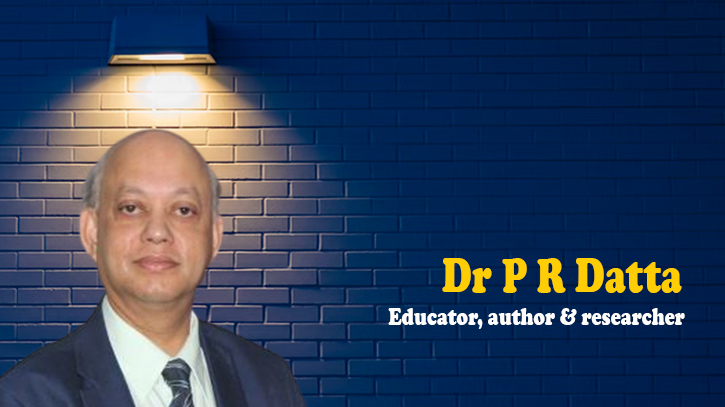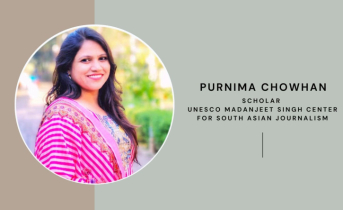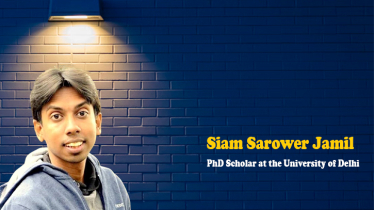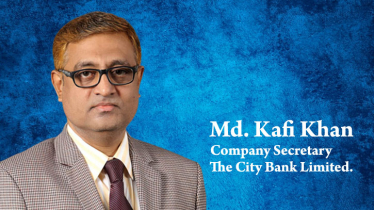
Photo : Messenger
Durga Puja is a festival celebrated by Hindus all over the globe with great enthusiasm. It is one of the most important festivals in India and is extensively celebrated throughout the nation. It is now also a popular event in the United Kingdom, where people from various backgrounds gather to celebrate. The festival celebrates the triumph of good over evil and brings together people from various cultures to enjoy colourful processions, traditional dance performances, and much more. The distinctive manner in which Durga Puja is celebrated in the United Kingdom reflects the country's solid multicultural identity.
Individuals residing in foreign countries may not have the opportunity to partake in the festivities of Puja as experienced in their own country. However, amongst their hectic schedules, they find solace in caring for their mother goddess, appreciating the splendour of beauty and joy during winter. Durga Puja is observed with varying customs and traditions across many nations worldwide. But this year's level of joy and celebration is a little different. The United Nations Educational, Scientific and Cultural Organisation (UNESCO) has included Durga Puja in its esteemed catalogue of Intangible Cultural Heritage of Humanity in 2021. In the year 2022, a total of 69 groups in the United Kingdom exclusively organised and carried out Durga Puja festivities. When discussing this celebration, it evokes thoughts of Kolkata. Its distinctiveness and exceptional nature characterise the celebration of Durga puja in Kolkata. The religious event in the city of Kolkata and West Bengal, which has a history spanning over three centuries, exhibited a distinct character in terms of the puja celebrations. Furthermore, the quantity of pujas conducted during this festival has witnessed a consistent annual growth.
There is a considerable amount of enthusiasm around the celebration of Durga Puja, particularly in London, within the vicinity of East London. This holy event appears to be commemorated with great magnitude and inside a jubilant ambience. In the city of London, several Durga Pujas are beyond the age of 35 years. The Durga Puja celebration in Kolkata holds significant prominence as the central hub of this holiday. However, it is noteworthy that the Durga Puja in London has also gained considerable renown, with the festival's magnitude progressively expanding over time. Similar to previous years, numerous Bengali groups residing in London are preparing to commemorate this day enthusiastically and follow their cultural customs. Last year, the first Durga procession occurred on the Thames, resembling the Durga Puja Carnival conducted in Kolkata. The parade, which Global Heritage Bengal coordinates, encompasses a boat excursion that traverses notable landmarks in Westminster, including the London Eye, St. Paul's Cathedral, London Bridge, and Tower Bridge, and concludes by returning to the Puja Mandap. The primary objective of organising the special Thames Parade is to enhance the promotion of Kolkata's Durga Puja as a globally recognised tourism destination. The persistence of this phenomenon will also be observed in the current year.
Some of the notable puja organisers in London include London Camden Durga Puja, Panchmukhi Durga Puja UK, Wimbledon Cultural Association, Sanatan Bengali Association, Palmers Green UK, London Bengali Association Durga Puja Orpington, Hindu Pragati Sangh Mandir, Pravasi Durga Puja in Hounslow London, London Sharad Utsav - Bengal Heritage Foundation, Spondon, Croydon Bengali Association Durga Puja, London Durga Puja Dussehra Samiti, Sanatan Association London (oldest Durga Puja organised by Bangladeshis), Sarbojanin Baba Loknath Association (SBLA), London. After coming to this country in the early nineties, I used to go to Durga Puja, organised by the Sanatan Association; the level of joy was different. How do you know the native Sardiya Ashwini smell, and the spark of joy was visible on the face? This worship probably took place all over East London. Then it seemed that the worship was universal. A lot has changed over time. The number of Bengali families has increased. Now, more than fifteen pujas are organised by Bangladeshis in East London. Walking around East London during Puja in the chilly October weather reminded me of the Bangladeshi-dominated area of a small town in Bangladesh. The music of Kansa and Dhak moved me after going to the neighbourhood in many groups. What an incomparable autumnal joy to watch the puja.
As the Bengali population in London has steadily expanded since the turn of the century, the UK's economic and cultural nerve centre has become one of the main hubs for Bengal's greatest festivals abroad. An essential role in the growth of Durga Puja in London has been played by the UK-based charity Bengal Heritage Foundation and its London Sharad Utsav. But it must be mentioned here that the Sanatan Association is the first initiative to organise Durga Puja among the diaspora Bangladeshis. For more than a decade, another organisation, Sarbojanin Baba Lokenath Association (SBLA), has brought this Durga Festival to a new dimension to the Bangladeshi Hindu community in London and beyond. Not only Durga Puja, SBLA organises but also monthly religious worship with regular observance of every puja. People from all walks of life, regardless of caste, status or background, participate in these pujas. During Durga Puja days, devotees pray to Goddess Durga, seeking peace and prosperity. Sarbojanin Baba Loknath Association has been doing this work with great success.
Durga Puja is an annual festival of primarily Bengali Hindus celebrating Goddess Durga's victory over the demon king Mahishasura with great pomp across India. The grandeur and magnitude of this Hindu festival have now spread worldwide. This puja is now celebrated with great pomp and ceremony in the vast Indian diaspora countries like the USA, UK, Canada, Australia etc. The festival is also known as Saradiya Navratri and is celebrated in the month of Ashwin according to the Hindu calendar, which usually falls between September and October in the Gregorian calendar. In West Bengal and Odisha, where it is prevalent, temporary earthen structures are made with images of Goddess Durga along with her four children Ganesha, Kartikeya (commander of the Devsena), Saraswati (Goddess of learning) and Lakshmi (Goddess of wealth). Worshipers flock to these pandals to make unique offerings known as pushpanjali on puja days.
There are many Goddesses in Hinduism, but Goddess Durga is slightly more worshipped. She is the epitome of strength and fortitude. Goddess Durga also symbolises democracy, justice and diversity. We live in a world that is often filled with injustice, misogyny, crime and the frenzy of evil forces. Goddess Durga represents hope and justice for all; she is the source of resistance against all evil forces. She is non-discriminating and peaceful. This is what democracy should be about – equality for all, irrespective of caste, religion or creed.
Like every year, the Durga festival is celebrated with great fanfare for five days to welcome Mother Durga in various cities of the country where Bengalis live. Even in the busyness of foreign affairs, it has become a great gathering of joy and celebration. This is like a great joy and enthusiasm of children around the mother. However, the Durga Pujas in the Bengali area of East London have the largest crowds of visitors and festive cheer. In what is unfailing peace and serenity, Mother Devi's frame is joined by the children of the Goddess and the demonic powers Mahishasura and Shiva, and firmly hold a variety of weapons, including bows, tridents, conch shells and bells. Goddess Sakambari Maa is the harbinger of universal friendship and progress, the Goddess of radiant nature who stands against evil forces. Regardless of caste religion, Durga Puja is celebrated in the Bengali neighbourhood of East London wonderfully, from offering Anjali at the mother's feet from the sixth to the tenth day of Vijaya.
Sarbojanin Baba Loknath Association has taken the initiative to organise the Durga Festival differently. Every day will be decorated with various arrangements. Several programs are held for the religious and moral human development of children and adolescents, which is a beautiful initiative to bring the wisdom of Durga Puja to the new generation, which will be an excellent addition to the motivation of children and teenagers. On the other hand, great arrangements are being made to create a wonderful atmosphere to hold and celebrate the deep spirit of the religious festival with Anjali, Aarti, and chanting along with brass, conch, and classical rhythms of Dhak. And to fill the festival to its brim, this year's many Durga Pujas will feature mind-blowing music, dance and lively renditions of Mahissur's Mardini. Mother Durga's divine blessings wash away all life's tiredness in these few days. Purity and love, equality and kindness, firmness and friendship become the union of the puja mandap. We hope that Maa Durga's message of peace will spread worldwide.
Dr P R Datta is educator, author, and researcher
Messenger/Disha








